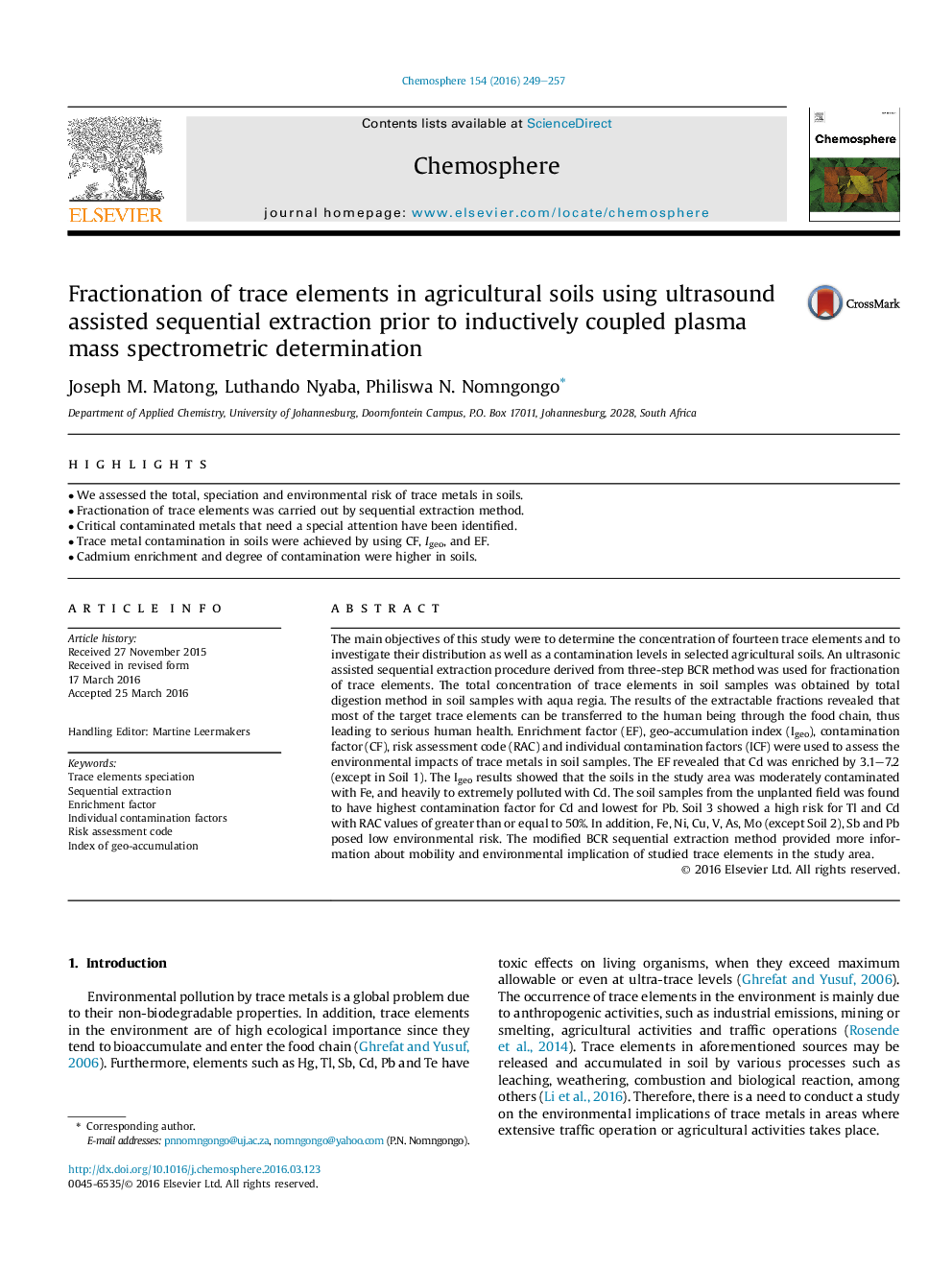| Article ID | Journal | Published Year | Pages | File Type |
|---|---|---|---|---|
| 6306622 | Chemosphere | 2016 | 9 Pages |
Abstract
The main objectives of this study were to determine the concentration of fourteen trace elements and to investigate their distribution as well as a contamination levels in selected agricultural soils. An ultrasonic assisted sequential extraction procedure derived from three-step BCR method was used for fractionation of trace elements. The total concentration of trace elements in soil samples was obtained by total digestion method in soil samples with aqua regia. The results of the extractable fractions revealed that most of the target trace elements can be transferred to the human being through the food chain, thus leading to serious human health. Enrichment factor (EF), geo-accumulation index (Igeo), contamination factor (CF), risk assessment code (RAC) and individual contamination factors (ICF) were used to assess the environmental impacts of trace metals in soil samples. The EF revealed that Cd was enriched by 3.1-7.2 (except in Soil 1). The Igeo results showed that the soils in the study area was moderately contaminated with Fe, and heavily to extremely polluted with Cd. The soil samples from the unplanted field was found to have highest contamination factor for Cd and lowest for Pb. Soil 3 showed a high risk for Tl and Cd with RAC values of greater than or equal to 50%. In addition, Fe, Ni, Cu, V, As, Mo (except Soil 2), Sb and Pb posed low environmental risk. The modified BCR sequential extraction method provided more information about mobility and environmental implication of studied trace elements in the study area.
Related Topics
Life Sciences
Environmental Science
Environmental Chemistry
Authors
Joseph M. Matong, Luthando Nyaba, Philiswa N. Nomngongo,
